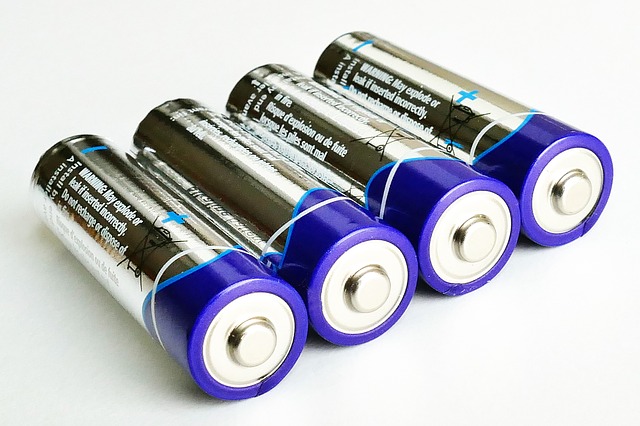Lithium Polymer Battery Life Years
Dec 10, 2019 Pageview:967
Lithium polymer batteries were a significant improvement to the development of lithium-ion batteries. Lithium polymer batteries are smaller, lighter and have a higher power capacity compared to their predecessors. These batteries aren't perfect though but these batteries are also more prone to mechanical damage, even though they are lighter. Like any other battery, lifespans are also limited. That is why it is important to know that how long can a battery from lithium polymer last? Is there any chance they can last longer?
We have discussed all these details in this article.
How Long Does A Lithium Polymer Battery Usually Last?
A number of external factors affect the lifespan of a battery pack on the shelf. What was the charge for the pack when it was stored? Will the user store the battery at temperatures warmer or colder? Is it going to be put on the device, the shelf, or the charger? Who made the internal electronics, and how well do they regulate the current in the pack?
Most lithium polymer batteries will not last longer than 300 cycles of charging. In this context, an entire charge cycle is described as a complete battery that is drained to empty and charged again at full capacity. Nevertheless, it may not be realistic to calculate the lifetime of a LiPo battery, as batteries go through various discharge depths when used.
Many manufacturers have said their LiPo batteries are going to last for 2 or 3 years. For a situation where a battery is routinely used and charged about 2 to 3 times a week, this is a somewhat reasonable estimate. However, a date stamp-based battery replacement may not apply to all scenarios as it does not take the level of use into consideration.
In any case, the first day it is powered, a LiPo battery is considered to begin "aging." This applies whether the battery is in regular use or stored for longer periods of time. As we will discuss in more detail later, how the quality of a LiPo battery deteriorates during storage is dictated by its storage conditions.
How Long Does A lithium polymer battery Degrade?
How much is it degrading? Lithium-ion batteries are "consumables" which will naturally get used to, even just sitting on the shelf.
In fact, Li-ion batteries begin to degrade (very slowly) when they are assembled at the factory. The irreversible chemical changes in the battery are then accelerated by each discharge / recharge cycle, reducing the capacity of the battery ever-so-slightly.
How short is it? If you follow the recommended 80/20 practice as much as possible, try to recharge when the battery is no less than about 20 percent, and stop charging no more than about 80 percent, a Li-ion battery in daily smartphone or PC usage can lose less than 10 percent of its capacity annually.
I don't have the reference right now, but I think the thumb rule that manufacturers use for warranty claims is that "normal wear" allows a battery to lose about 20 percent capacity per year.
Two years of 20% loss means that the battery would have only 64% of its original capacity; three years later it would have only 51%.
So, how you treat your lithium polymer batteries is very important, especially if you keep your devices for over a year or two.
All batteries are inevitably going to degrade, but how quickly you can control is important!
How Can You Make Your lithium ion battery Last Longer?
Following are the tips which can be used to make lithium ion batteries last longer;
Tip 1: Use or lose it.
It is important to remember that not only during use, but also during idly sitting on a shelf, batteries degrade. This is one reason why most manufacturers specify a cycle life for their batteries as well as a calendar life.
So treating batteries and battery-powered devices like you do dairy products is a good approach to take. If you choose to buy the freshest one. A slightly older item is good–particularly if an extraordinary discount is offered but expect it to expire earlier.
Steer clear of the questionable origin of anything. And avoid buying something you're just expecting to use for a long time now.
Tip 2: Keep cool.
Temperature is the most important influence on battery life as far as the operating environment is concerned. Typically, Li-ion batteries are happiest at room temperature between 20 and 25 ° C.
A protective layer within the batteries breaks and needs to be reconstituted in warmer temperatures, which sucks up some of the battery's energy capacity.
And the chemical reactions within the battery slow down in colder temperatures. This causes a problem comparable to roadworks during rush hour traffic when combined with significant power draw: too many cars trying to get through too few roads.
However, cold is generally less harmful than heat overall. So if you choose to put your phone in the sun or shadow, the latter is probably preferable.
Tip 3: No more things to recall.
The third tip is about when and how many batteries should be charged. The "memory effect" is one of the most widely known aspects of battery life.
Partial charging and discharging significantly decreases the energy capacity of older rechargeable battery chemistries such as nickel cadmium.
Tip 4: Outs and ins.
The last tip is about drawing power. Forcing batteries to deliver high power output or charging very fast is equivalent to both heating and cooling at the same time: the protective layer breaks and rebuilds, and at the same time too many cars cause a traffic jam even without roadworks.
Even lower-rate charging and discharging tends to be worse than sitting idly fully charged. Try not to put too much pressure at any time on your system.
Less known is that the effect of memory in lithium-ion batteries tends to be very small if it exists. Alternatively, they have properties that are quite complex. Batteries fail more when not in use and fully charged. If left unused for several days or weeks, they should ideally be kept at a relatively low charge, e.g. charged at around 20 percent.
- Prev Article: Lithium Ion Battery Life Tips
- Next Article: Prolong Lithium Battery Life Methods
Leave Message
Hottest Categories
-
Hottest Industry News
-
Latest Industry News














